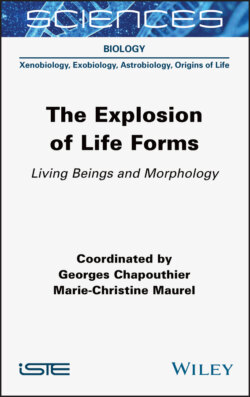Читать книгу The Explosion of Life Forms - Группа авторов - Страница 17
1.7. Conclusion
ОглавлениеSeeking to understand how life appeared on Earth also means looking for the fossil traces of the first cells, which inevitably leads to the question of how big the smallest living organism is (implied: the smallest being the simplest, therefore the first to appear on Earth). In connection with genomics work, Craig Venter (director of the Institute for Genomic Research – TIGR4 – in Rockville, Maryland) and Hamilton Smith (who won the Nobel Prize in 1978 for the co-discovery of restriction enzymes) have removed the genes of Mycoplasma genitalium one by one, reputed to have the smallest known genome. The aim is to obtain a viable organism with the minimum number of genes, Mycoplasma laboratorium, making it possible to develop, in fine, the smallest living organism possible: “The goal is to fundamentally understand the components of the most basic living cell” (Singer 2007). This approach raises one of the most delicate problems in contemporary biology: what consequences can the manufacture of such objects have on the future of humanity, the biosphere, the environment and the planet? Is there a risk of unbalancing ecosystems?
Producing organisms that are “outside the norm”, in the technical sense, employs us to think about the standardization of criteria for living things, the quality of life, and lastly, the normativity of living things (what does “being normal” mean?). In 1995, Jean-Pierre Séris declared that it was impossible to set standards of vital value: “Uniformity, the reproduction of that which is identical has a meaning and a technical value. It has no biological value. It is biological nonsense ...”
